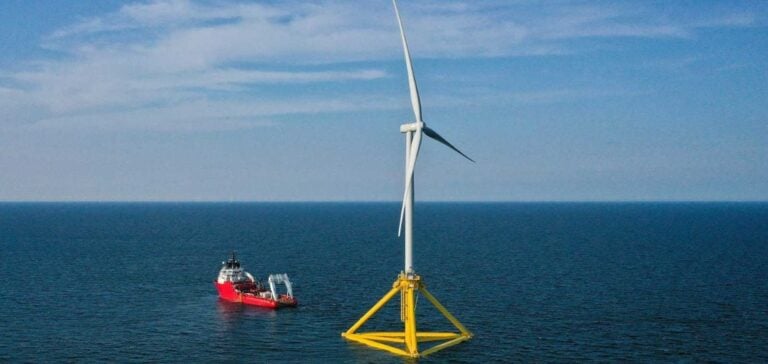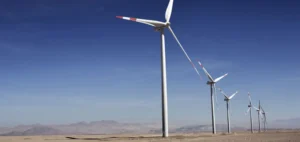The 1.1 GW floating offshore wind project developed by the KF Wind joint venture, involving Mainstream Renewable Power and Ocean Winds, has received environmental impact assessment (EIA) approval from South Korea’s Ministry of the Environment.
This validation represents a critical step towards the launch of construction, planned off the coast of Ulsan.
The project, divided into two phases of 375 MW and 750 MW, involves the installation of 75 wind turbines on floating structures.
The aim is to harness offshore wind resources, thereby optimizing energy production.
The EIA is the result of a lengthy assessment period, including more than 12 months of environmental monitoring and consultations with local stakeholders, notably coastal communities and fishermen.
The aim is to ensure that the project’s potential impacts on the marine ecosystem are identified and mitigated.
The environmental authorities thus validate the application of local and international standards for sustainability and environmental risk management.
Technical features and operational challenges
The development includes two fixed offshore substations, three 80-kilometer undersea export cables, and a 4.5-kilometer high-voltage line for connection to Korea Electric Power Corporation’s (KEPCO) Shinonsan substation.
These infrastructures are essential for integrating the electricity generated into the onshore grid, thus guaranteeing a stable supply.
The use of floating foundations makes it possible to overcome the limitations of deep water, a solution adapted to the specific geographical features of the Korean coastline.
This project is part of South Korea’s energy strategy to diversify its energy mix and reduce its dependence on fossil fuels.
The focus on floating wind power, a technology in its maturation phase, meets the need to increase the share of renewable energies as part of the country’s decarbonization objectives.
Support for maritime infrastructure and renewable energy production positions South Korea in the competitive Asia-Pacific wind energy market.
Regulatory environment and market outlook
The approval of the EIA marks a turning point in the country’s regulatory framework, in line with the South Korean government’s ambitions to strengthen local clean energy production capacity.
Partnerships with industrial players such as Ocean Winds and Mainstream Renewable Power provide essential know-how, but they must also adapt to local requirements in terms of compliance and social responsibility.
These collaborations require rigorous management of the development process, particularly in terms of compliance with environmental standards.
The offshore wind market in South Korea is attracting increasing investment, supported by favorable government policies and targeted subsidies.
Competition for large-scale projects in the region remains intense, and the companies involved have to navigate complex challenges related to infrastructure supply and logistical constraints.
Completing construction work on schedule remains a key issue for stakeholders.
By moving beyond the critical stage of environmental assessment, this floating wind project is positioning itself as a potential catalyst for similar future developments in the region.
The lessons learned from managing environmental impacts and community relations could serve as a model for other large-scale initiatives in Asia.





















